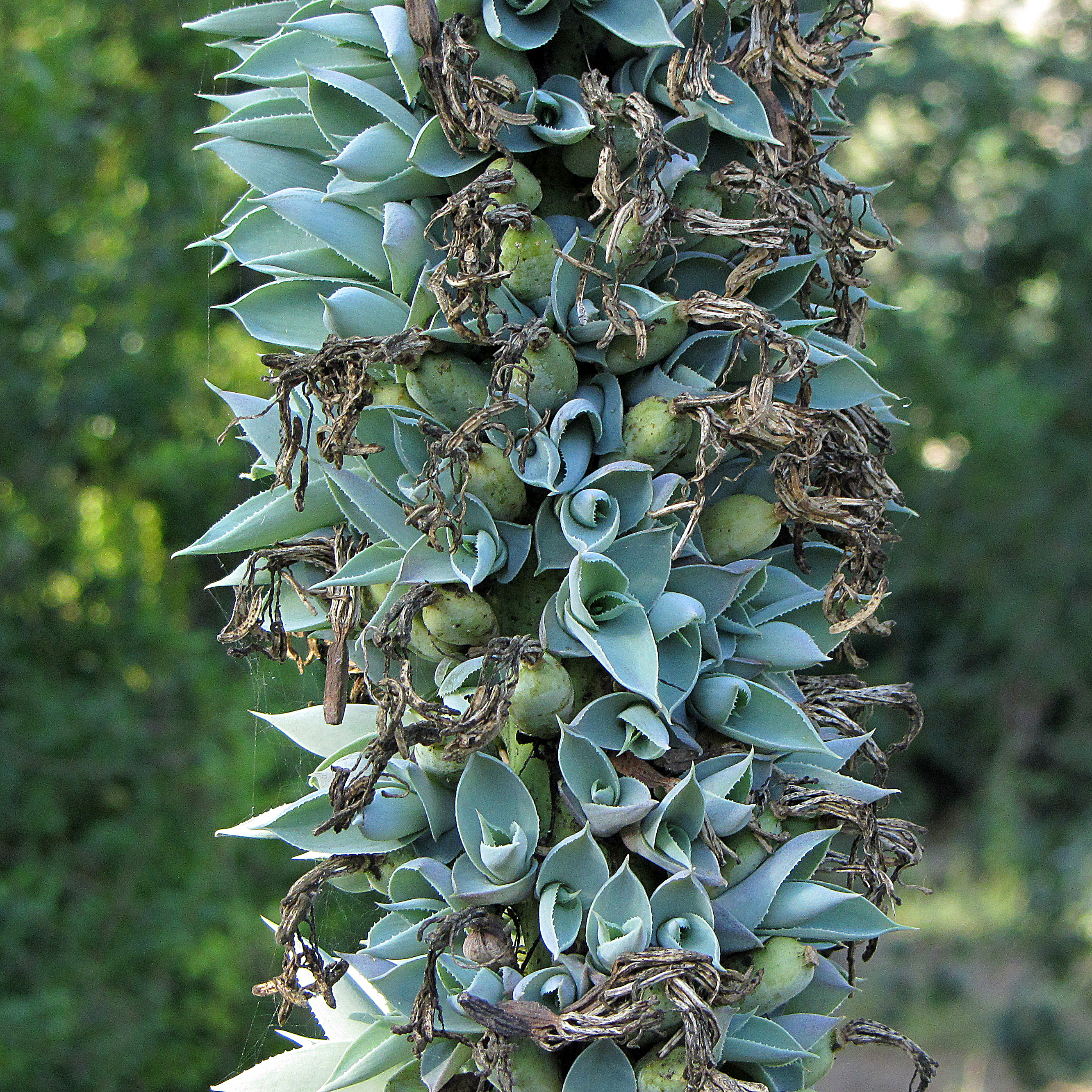bulbil on:
[Wikipedia]
[Google]
[Amazon]
 A bulbil (also referred to as bulbel, bulblet, and/or pup) is a small, young plant that is reproduced vegetatively from
A bulbil (also referred to as bulbel, bulblet, and/or pup) is a small, young plant that is reproduced vegetatively from
 Within
Within
axillary bud
The axillary bud (or lateral bud) is an embryonic or organogenic shoot located in the axil of a leaf. Each bud has the potential to form shoots, and may be specialized in producing either vegetative shoots (stems and branches) or reproductive sh ...
s on the parent plant's stem or in place of a flower on an inflorescence
An inflorescence is a group or cluster of flowers arranged on a stem that is composed of a main branch or a complicated arrangement of branches. Morphologically, it is the modified part of the shoot of seed plants where flowers are formed o ...
. These young plants are clones of the parent plant that produced them—they have identical genetic material. The formation of bulbils is a form of asexual reproduction
Asexual reproduction is a type of reproduction that does not involve the fusion of gametes or change in the number of chromosomes. The offspring that arise by asexual reproduction from either unicellular or multicellular organisms inherit the fu ...
, as they can eventually go on to form new stand-alone plants.
Although some bulbils meet the botanical criterion to be considered a true bulb, there are a variety of different morphological forms of bulbils, some of which are not considered to be bulbs. Hence the reason for distinction between bulbs and bulbils. For example, some bulbous plant groups, like onions and lilies, produce bulbils in the form of a secondary, small bulb. Onion and lily bulbils meet the botanical criterion to be labeled a true bulb. All bulbils produced by bulbous plants are to be considered bulbs, but not all bulbils are to be considered bulbs. For example, other non-bulbous plant groups, like various genera within the subfamily Agavoideae
Agavoideae is a subfamily of monocot flowering plants in the family Asparagaceae, order Asparagales. It has previously been treated as a separate family, Agavaceae. The group includes many well-known desert and dry-zone types, such as the agaves ...
, are well known to produce bulbils that do not actually meet the botanical criterion to be considered a bulb.
Bulbils in Agavoideae
Agavoideae
Agavoideae is a subfamily of monocot flowering plants in the family Asparagaceae, order Asparagales. It has previously been treated as a separate family, Agavaceae. The group includes many well-known desert and dry-zone types, such as the agaves ...
, bulbils develop on the inflorescence
An inflorescence is a group or cluster of flowers arranged on a stem that is composed of a main branch or a complicated arrangement of branches. Morphologically, it is the modified part of the shoot of seed plants where flowers are formed o ...
of a blooming plant. The development of bulbils in this group is common in approximately 17 ''Agave
''Agave'' (; ; ) is a genus of monocots native to the hot and arid regions of the Americas and the Caribbean, although some ''Agave'' species are also native to tropical areas of North America, such as Mexico. The genus is primarily known for ...
'' species, all ''Furcraea
''Furcraea'' is a genus of succulent plants belonging to the family Asparagaceae, native to tropical regions of Mexico, the Caribbean, Central America and northern South America. Some species are also naturalized in parts of Africa, the United S ...
'' species, and has been somewhat documented in ''Yucca
''Yucca'' is a genus of perennial plant, perennial shrubs and trees in the family (biology), family Asparagaceae, subfamily Agavoideae. Its 40–50 species are notable for their Rosette (botany), rosettes of evergreen, tough, sword-shaped Leaf, ...
'' (particularly ''Yucca elata
''Yucca elata'' is a perennial plant, with common names that include soaptree, soaptree yucca, soapweed, and palmella. It is native to southwestern North America, in the Sonoran Desert and Chihuahuan Desert in the United States (western Texas, N ...
''), and ''Hesperaloe
''Hesperaloe'' (false yucca) is a genus of flowering plants in the family Asparagaceae, subfamily Agavoideae. It contains perennial yucca-like plants with long, narrow leaves produced in a basal rosette and flowers borne on long panicles or race ...
''. Bulbils can develop quite quickly, many do so after the flowers die, and can persist on the inflorescence for around one to two years before falling to root in the ground. While still on the parent plant, many species develop adventitious root Important structures in plant development are buds, shoots, roots, leaves, and flowers; plants produce these tissues and structures throughout their life from meristems located at the tips of organs, or between mature tissues. Thus, a living plan ...
s and can grow to sizes ranging from 5 to 15 centimeters, if left to mature.
References
{{Reflist Plant morphology Plant reproduction